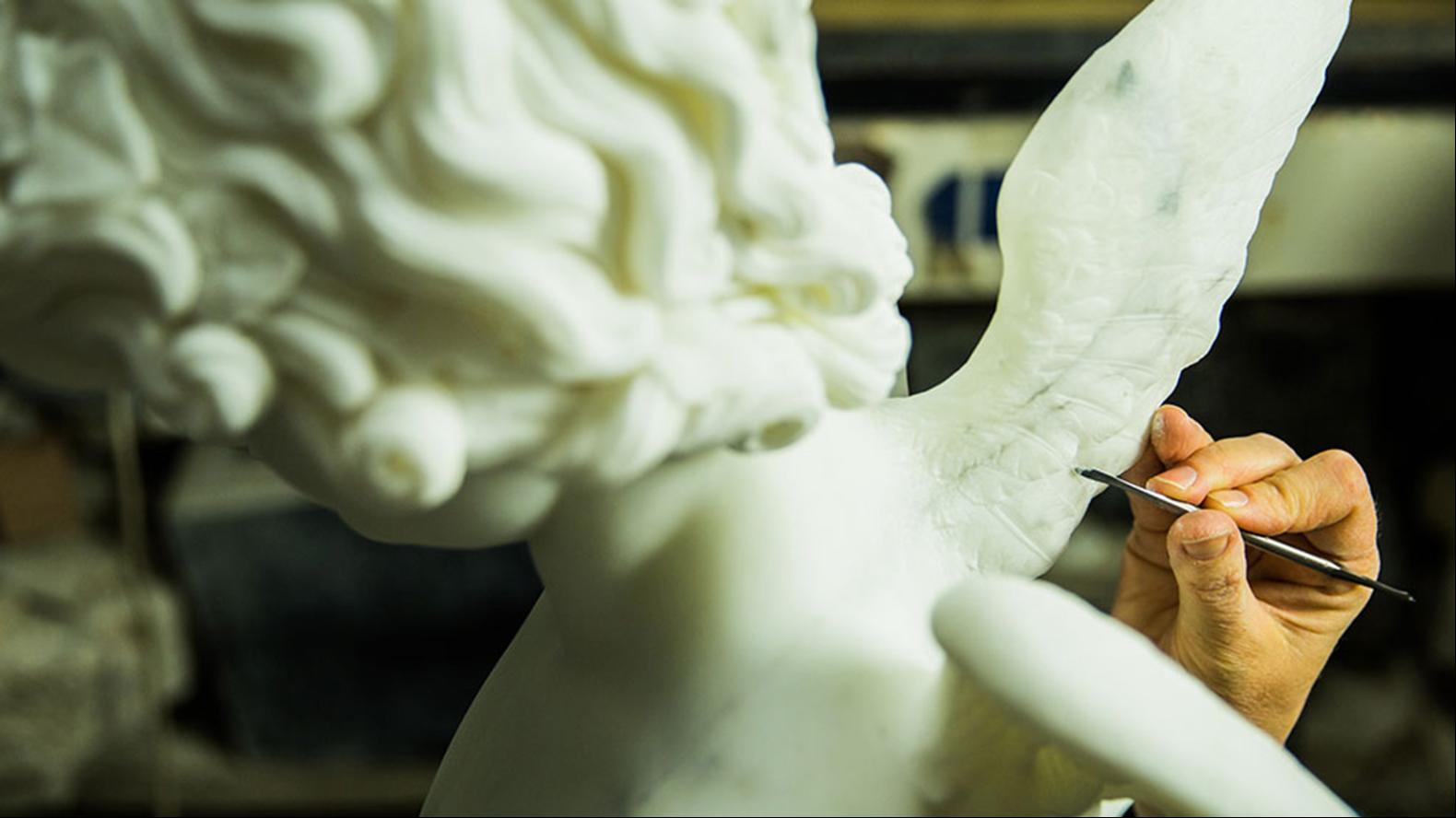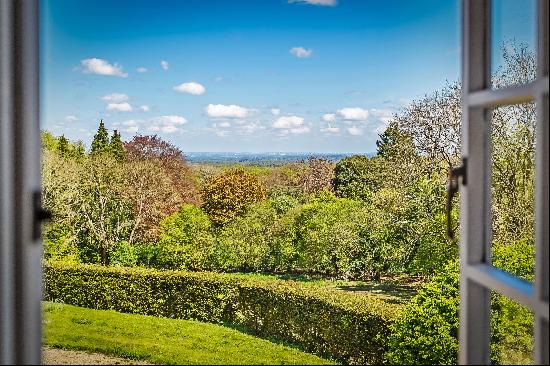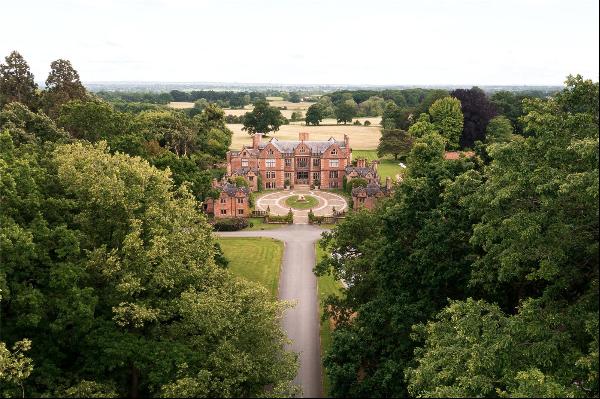
By Hannah Keegan
Last winter, the conservators at Plowden & Smith, a London-based art restoration company, were presented with an unusual challenge. On the left side of an ornate landscape painting, where there should have been blue sky and soft clouds, was a gaping, beak-shaped hole. “A bird had flown through an open door and straight into it,” explains Camilla Hughes-Hunt, the company’s managing director. “Luckily, it was a small bird, so the painting wasn’t destroyed. We had to carry out a tear repair of the canvas and then retouch the front of the painting to make the damage invisible.”
Looking at it now, you would never know it had been in such a state: such is the magic of conservators, highly-trained professionals whose job it is to bring damaged artworks back to life. “Our conservators are equal parts artists and surgeons,” adds Hughes-Hunt. “So much conservation is a blend of detailed ‘surgical’ procedures followed by the artistic side of retouching or inpainting,” where damaged areas are filled in to recreate the complete image.

Founded in 1966 by Peter Smith, a former conservator at the British Museum, Plowden & Smith’s work is as wide-ranging as it is meticulous, with clients spanning museums, insurance companies and art dealers to private individuals seeking the repair of an heirloom. The company restores everything from fine art — works by Damien Hirst, David Hockney, Louise Bourgeois and Jeff Koons have all passed through their South London studio — to wood, furniture and interiors, such as a gilded ceiling or the crumbling fireplace of a historic home.

The team approaches each project as a problem to solve, Hughes-Hunt explains. She recalls a client enquiring about the removal and framing of a mural painted directly onto the wall of their home by British graffiti artist Stik: “The owners were moving and wanted to sell it,” she says. “In discussion with Stik, we removed the painting from the wall, conserved it in his studios — leaving some elements of damage that were considered part of its history — and then made a bespoke frame.” It went on to fetch more than £100,000 at auctioneers Bonhams.
Perhaps unsurprisingly, a core challenge of the job is managing expectations when, for example, a client asks for a piece to be transformed or updated in a way the company deems unethical. Plowden are members of the Institute of Conservation and adhere to their strict guidelines, which prohibit making any changes that would fundamentally alter an object. “We had a beautiful historic leather screen come in which the owner wanted cutting down to make it shorter when they moved to a smaller house with lower ceilings,” says Hughes-Hunt. “We declined to do that.”

Another issue they face is the newer materials that come their way — latex or rubber, for example, which often show up in mixed media work. “Contemporary artists often don’t think about the longevity of the materials they’re using and how they’ll age. They’re not chemists or scientists and can be far more interested in the concept behind a piece than the making of it — which can make it very, very tricky to deal with in restoration,” she says.
Other projects are so steeped in history that there’s a sense of awe in each moment spent working on them. In 2019, Plowden began working with the V&A to restore Frank Lloyd Wright’s Kaufmann office (a private project he undertook in 1935 for businessman Edgar J. Kaufmann that’s widely thought to have revived the architect’s career), in preparation for display at the V&A East Storehouse in London’s Queen Elizabeth Olympic Park, where it was installed last year. The office had been in storage at the V&A for 15 years, all of its original woodwork, furniture, carpets and upholstery textiles intact — in order to conserve it, Plowden’s team had to dismantle and carefully restore its plywood panel interiors piece by piece. “It was a genuinely one-off project,” says Hughes-Hunt. “To work with it up close is to see the technique and talent that’s gone into it.”
This, in the end, is the unique beauty of conservation. Plowden’s studio is filled with items — some very old, others startlingly new — that have been deemed special enough by their owners to restore in diligent and careful detail. “It’s often an opportunity to be close to greatness, really,” says Hughes-Hunt. “And that’s very exciting.”
Photography: Andy Barnham/Plowden & Smith





















